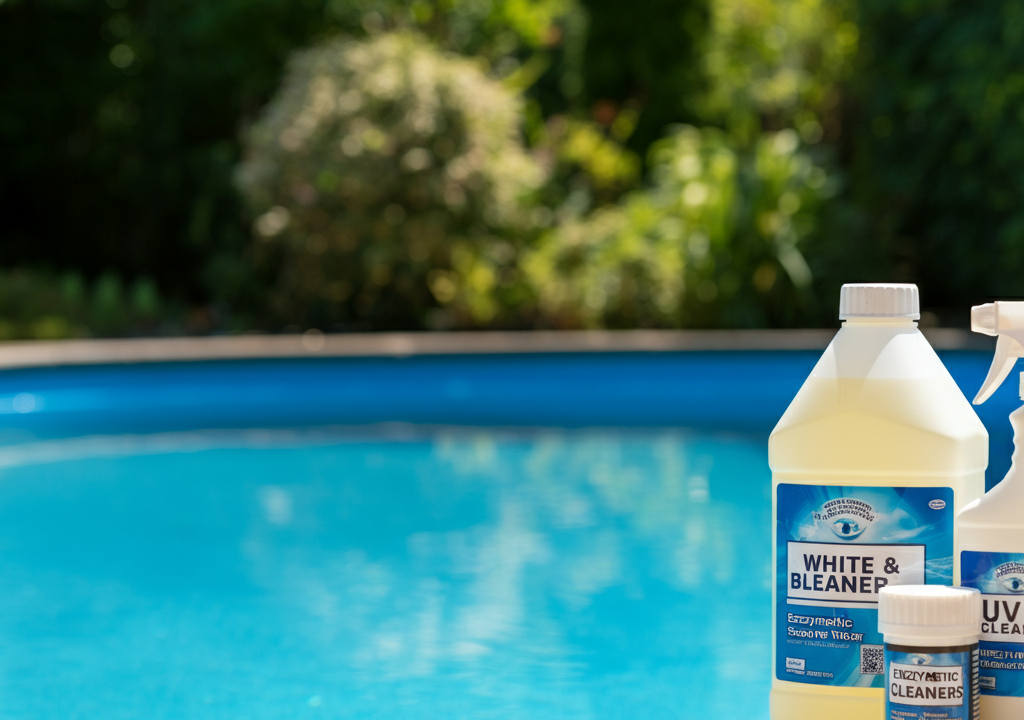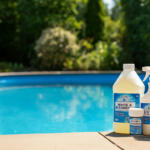
White water mold can be a homeowner or pool owner’s worst nightmare. It sneaks into your pool or water systems, developing into an unsightly, slimy mess that’s hard to eliminate. Left unchecked, white water mold can disrupt your water systems, clog filters, and create an unappealing environment around your home or pool.
If you’ve asked yourself, “Will bleach kill white water mold?” you’re not alone. This guide will break down everything you need to know about white water mold, whether bleach can resolve the problem, and the best preventative and alternative methods to regain control of your water systems.
What Is White Water Mold?
White water mold is a biofilm, a type of fungus-like organism that thrives in moist environments, often in swimming pools and water systems. It appears as a white, slimy coating that can resemble tissue paper. While it might look harmless, it’s anything but. White water mold can quickly spread through plumbing systems, clog filters, and contaminate surfaces.
Why Is It Harmful?
- Clogs Filtration Systems: White water mold builds up in pipes, filters, or soft water systems, reducing water circulation.
- Spread of Biofilms: Once established, it creates a breeding ground for bacteria and potentially harmful microorganisms.
- Hard to Remove: It resists conventional cleaning methods and thrives in damp, nutrient-rich environments with poor circulation.
For homeowners and pool owners, understanding this persistent problem is the first step toward taking control.
Understanding White Water Mold
What Does White Water Mold Look Like?
White water mold appears as a slippery, gelatinous layer that might look like slimy tissue paper floating in water. It often forms in hard-to-spot areas like pipes, filter housings, or pool corners.
Why Does It Thrive?
The primary conditions for white water mold growth include:
- Poor Water Circulation: Stagnant water enables biofilm buildup.
- Imbalanced Water Chemistry: Low chlorine levels or improper pH levels allow mold spores to grow unchecked.
- Debris in the System: Organic matter like leaves, dirt, or algae can fuel mold growth.
How Is It Different from Algae?
Unlike algae, which often appear green or yellow and thrive in sunlight, white water mold thrives in shaded areas and has a distinctly slimy, white appearance.
Does Bleach Kill White Water Mold?
Bleach, a commonly used household disinfectant, is indeed effective at killing white water mold—but only when used correctly.
How Does Bleach Work on White Water Mold?
Bleach contains sodium hypochlorite, a chemical compound that destroys organic material on contact. Here’s why bleach is effective at mold removal:
- Kills Mold at Its Core: Bleach targets the biofilm, breaking down its structure and halting its growth.
- Prevents Immediate Regrowth: When used in sufficient quantities, it can eliminate mold spores as well.
Concentration and Contact Time Are Key
To achieve the best results, strict adherence to proper concentration and application time is critical.
- Use Proper Ratios: A 1:10 bleach-to-water ratio can effectively eliminate white water mold. However, consult your pool system’s instruction manual to determine compatibility with bleach-based cleaning.
- Timing Matters: Allow the bleach solution to contact the mold for 10–15 minutes to ensure thorough removal.
Limitations of Using Bleach
- Corrosive Properties: Bleach can damage pool components, including liners, over time.
- Limited Penetration: Chlorine-based bleach may not reach biofilm colonizing within deep pipes or filters.
Thus, while bleach is a strong ally in your cleaning arsenal, it may not always be the best standalone solution.
Alternative Solutions to Eliminate White Water Mold
When bleach doesn’t cut it or if you prefer other options, these alternatives can help fight white water mold effectively.
Chemical Treatments
- Shock Chlorination: Superchlorinating the pool with more concentrated chlorine levels will kill white water mold and any remaining biofilm.
- Algaecides: Specific algaecides also work by breaking down mold-affected areas. However, not all algaecides are designed to target mold specifically.
UV Sanitizers
UV sanitizers kill microorganisms like mold without introducing chlorine or harsh chemicals. They serve as an eco-friendly solution that minimizes chemical exposure—but often require upfront investment.
Enzymatic Cleaners
Enzymatic cleaners use biological agents to break down organic matter fueling mold growth. These are highly effective at penetrating mold in hidden areas without harming sensitive materials, making them a gentler alternative.
Preventative Measures to Keep White Water Mold Away
Prevention is always better than treatment. Follow these steps to keep your water systems clean and mold-free.
- Maintain Proper Water Chemistry: Keep chlorine levels within optimal ranges (1–3 ppm for pools) and monitor pH levels regularly.
- Clean Filter Spas Frequently: Rinse your pool filters weekly and deep-clean them monthly to prevent mold buildup.
- Ensure Good Water Circulation: Invest in quality pumps, jets, and water circulation systems to avoid stagnant water.
- Stick to a Cleaning Schedule: Regular brushing of pool walls and scrubbing system components keeps biofilm from taking hold.
- Monitor for Organic Debris: Limit the buildup of leaves, dirt, and other organic matter in your pool or system.
Step-by-Step Guide to Using Bleach for Mold Removal
Follow this methodical approach to tackle white water mold head-on.
Materials Needed
- Bleach (sodium hypochlorite)
- Protective gloves and goggles
- Bucket and water source
- Pool brush or cleaning tools
Process
- Check Water Chemistry: Test chlorine, pH, and alkalinity levels beforehand to ensure safety.
- Dilute Bleach: Create a cleaning solution by mixing one part bleach with ten parts water.
- Apply Directly to Affected Areas: Use a brush to scrub moldy surfaces while applying the bleach solution.
- Allow Contact Time: Leave the bleach on the surface for at least 10–15 minutes.
- Rinse and Circulate: Thoroughly rinse all surfaces, activate your circulation system, and allow water to flow through filters.
- Recheck Water Chemistry: Reestablish safe swimming and usage conditions by recalibrating chlorine and pH levels.
Essential Safety Precautions
- Ventilate the Area: Whether cleaning a pool or an indoor water system, ensure adequate airflow to avoid bleach inhalation.
- Wear Protective Gear: Use gloves, goggles, and a mask to safeguard your skin and eyes from bleach splashes.
- Follow Instructions: Always follow product labels and pool-specific recommendations to minimize the risk of overuse or damage.
Keep Your Water Systems Mold-Free for Good
White water mold may be tough, but with the right approach, you can eliminate it and enjoy mold-free water systems. Whether you use bleach, alternative treatments, or a combination of both, the key is consistent maintenance and proactive management.
For homeowners and pool lovers alike, a clean system means a healthier, more enjoyable environment. Don’t forget to take regular preventative measures and treat even the smallest signs of white water mold immediately.
Clear your water, clear your mind!
do want more information about white mold than read this article: White Mold









No Comments